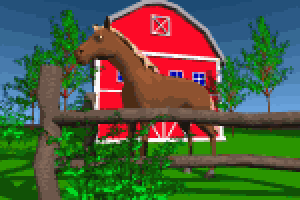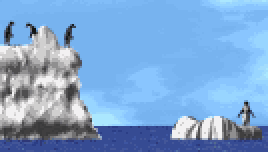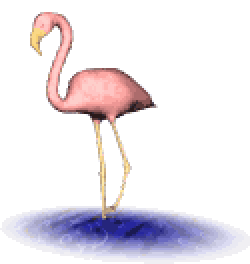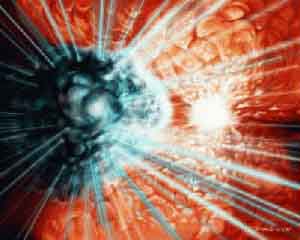
Courtesy of NASA
at http://www.nasa.gov
Nobody had heard about the great LASER light show in the sky until it was announced by a team led by K. Davidson (U. Michigan) and S. Johansson (U. Lund). The research team discovered that the unusually variable star Eta Carinae emits ultraviolet light of such a specific color it is most probably LASER light! The artist's conception shown depicts a possible model for the Hubble Space Telescope observations. In this model, Eta Carinae emits many LASER beams from its surrounding cloud of energized gas. This ultraviolet LASER is the first of its kind to be discovered.
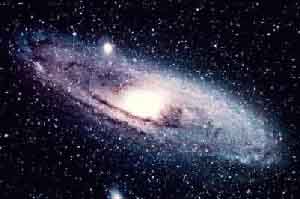
Our galaxy is thought to look much like Andromeda. Together, these two galaxies dominate the Local Group of galaxies. Andromeda is composed of hundreds of billions of stars. The several distinct stars that surround Andromeda's image are actually stars in our galaxy that are well in front of the background object. Andromeda is frequently referred to as M31, and it is so distant it takes about 2 million years for light from it to reach us.
Roughly 3,000 Light-years from Earth
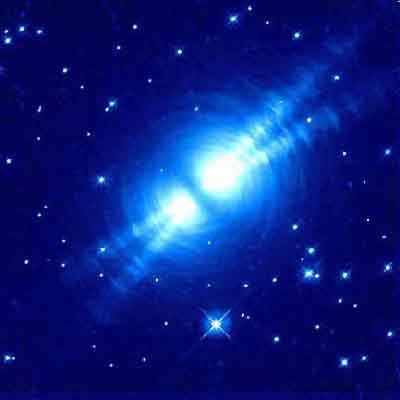
Here is the file:
n10c-n-EGGNEB_2TN.jpg Courtesy
of NASA at http://www.nasa.gov
This image, taken by the Hubble Space Telescope
(HST) in January 1996, shows a pair of mysterious "searchlight" beams emerging
from a hidden star, crisscrossed by numerous bright arcs. Referred to as
the Egg Nebula, or CRL2688, it is located roughly 3,000 light-years from
Earth.
Image: Raghvendra Sahai and John Trauger (JPL), the WFPC2
science team, and NASA

M2-9 is a striking example of a "butterfly" or bipolar planetary nebula. The central star in M2-9 is known to be one of a very close pair which orbit one another at close distances. It's 2,100 light-years away in the constellation Ophiucus.
Image: Bruce Balick (University of Washington) and NASA
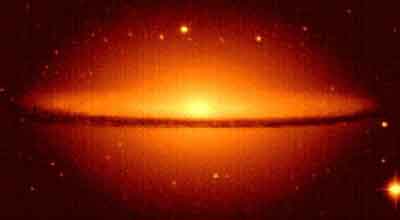
n10e-n-sombrero-galaxy-95_72TN.jpg
Courtesy of NASA
at http://www.nasa.gov
The famous Sombrero galaxy (M104) is a bright, nearby spiral galaxy. The prominent dust lane and halo of stars and globular clusters give this galaxy its name. Something very energetic is going on in the Sombrero's center. Astronomers speculate that a black hole lies at the Sombrero's center, a black hole a billion times the mass of our Sun. This image was taken in blue light by the 0.9-meter telescope at Kitt Peak National Observatory.

Here is the file: n10f-n-whirlpool-galaxy-0110aTN.jpg
Courtesy of NASA
at http://www.nasa.gov
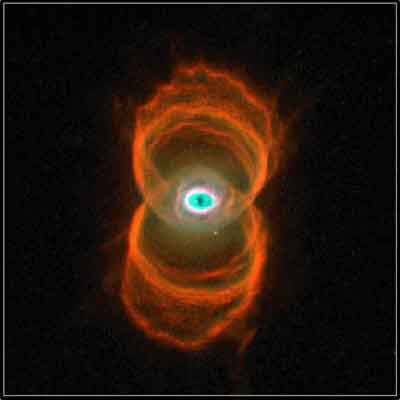
Here is the file: n10g-n-hourglass-nebTN.jpg
Courtesy of NASA at http://www.nasa.gov
The Hourglass Nebula is a planetary nebula. When a star such as the
Sun starts to die it becomes red and expands into a giant star. The old
star will eventually eject its outer layers. The gaseous shell is illuminated
by the dense stellar core, which is now exposed. We see the illuminated
gas as a planetary nebula.
Image: Raghvendra Sahai and John Trauger (JPL), the WFPC2
science team, and NASA
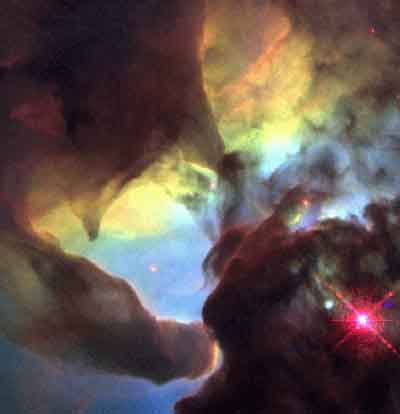
Here is the file: n10h-n-twisters-9638bTN.jpg
Courtesy of NASA at http://www.nasa.gov
An image of the interstellar "twisters" in the heart of the Lagoon
Nebula (Messier 8), which lies 5,000 light_years away in the direction
of the constellation Sagittarius.
Image: NASA
a Satellite Galaxy to the Milky Way
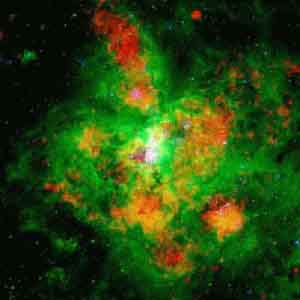
Courtesy of NASA
at http://www.nasa.gov
Shining across the electromag-
netic spectrum, 30 Doradus glows like a Christmas tree because of all its energetic processes. It is a distinctive region visible in a Milky Way satellite galaxy called the Large Magellanic Cloud (LMC), is a hotbed of star formation, supernova explosions, and ionized plasma. This image is a composite of three pictures taken in three different wavelength bands of light. Red represents X_ray emissions created by gasses as hot as 1 one million degrees Kelvin. Green represents emissions from ionized hydrogen gas, and blue represents ultraviolet radiation that is primarily emitted by hot stars.
Image: T.Credner and NASA
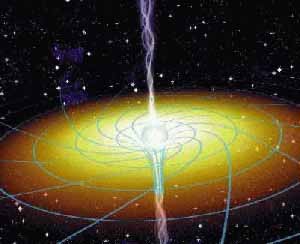
Courtesy of NASA
at http://www.nasa.gov
Gravity can do more than floor you. In a star system thought to contain a black hole, its gravity can spin you too. This frame dragging effect is most prominent near massive, fast-spinning objects. Now, a team led by W. Cui (MIT) has used the orbiting Rossi X-ray Timing Explorer to search for this effect and claims that matter in a system near a black hole gets caught up and spun around the black hole at just the rate expected from frame dragging at the rate that frame dragging occurs. Image: J. Bergeron, Sky & Telescope Magazine, and NASA
 Next Page -
Next Page - 
